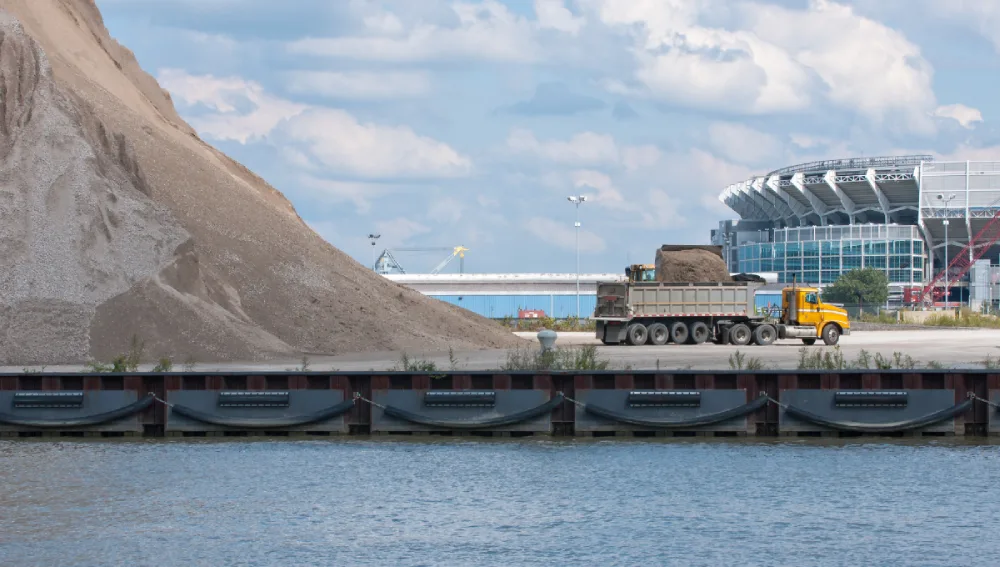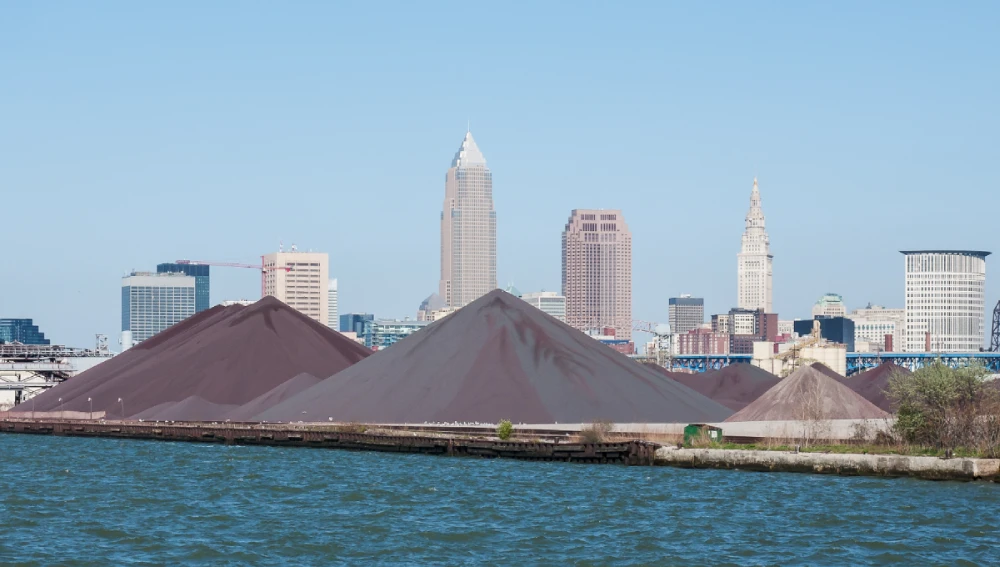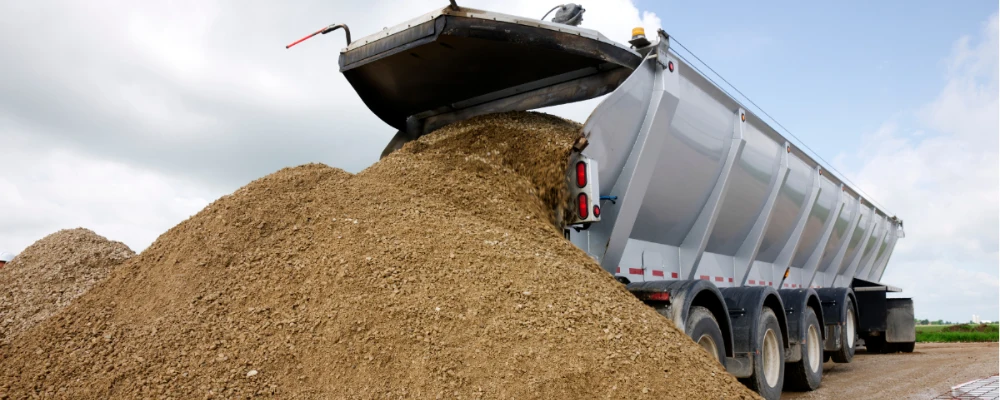Aggregates play a crucial role in building. Understanding the classification and types of aggregates determines the quality and performance of the construction materials. Aggregates are primarily mixed with cement paste or mortar to form concrete. In civil engineering, aggregates play an important role. The smarter way to know about aggregates is to examine the types and classifications explained in the blog to improve your building functionality.
Types of Aggregates

Aggregates are crucial elements that are used in construction. There are different types of aggregates depending on their application. Some of the generally known aggregates are mentioned below:
Sand
Sand is a fine material that is widely used in construction sites. It is generally taken from river beds, deserts, and beaches. Sand is composed mainly of silicon dioxide in the form of quartz.
The size of the sand particles differs according to the place from which they are taken. The particle size differs from 0.05 mm to 2.0 mm. Sand aggregate is extensively used in construction projects and forms a strong foundation, plasterwork, and flooring.
Crushed Stone
The crushed stone definition is straightforward: it is stone crushed into small pieces. Crushed stones are generally produced in quarries. Crushed stones are man-made aggregates. Once the stone is crushed, the end product is screened and segregated according to size.
Generally, the crushed stone does not have a specific size, but it depends on the crushing process. However, they generally come under coarse aggregate, which are larger than 4.75 mm. Crushed stones are used in railway ballast, decorative rock gardens, and the construction of buildings.
Gravel
Gravel is a stone material. In geology, gravel is defined as “a natural material that consists of water-transported materials and usually has a round shape as a result of the water transport.”
Since gravel is formed by natural process, it has a smooth surface and a size larger than two millimeters.
Gravel can be utilised in landscapes, foundations, and drainage systems. River rock and pea gravel are the two types that come under gravel.
Slag
Slag is an industrial waste or by-product produced from iron smelting. Slag is commonly used along with asphalt or concrete. Since it is a by-product, it promotes sustainability..
Slag generally falls under two categories: Coarse slag and Fine slag The coarse slag is larger than 4.75 mm and is widely used in concrete aggregate and road construction. The fine slag, is less than 100 microns. Fine slag is used in asphalt mixtures, slag wool insulation, and as fillers in different industrial products.
Recycled Concrete
If the concrete is no longer usable for for construction, it can be recycled. Instead of depositing the waste into landfills, this concrete can be crushed into aggregates. They are sustainable alternatives to natural ones.
Recycling concrete is generally around 4.75 mm. Application of recycled concrete includes road construction, asphalt, and new concrete production.
Geosynthetic Aggregates
Geosynthetic aggregates are not naturally made. They are made in industries using polymers such as polypropylene or polyethylene. These materials can be tailored according to the size required for construction.
The application of these aggregates are found in erosion control, road construction, and drainage systems.
Classification of Aggregates

Aggregates are classified into different types depending on their shape, origin, and size. The classification of aggregates is explained below:
Classification Depending on Size
Depending on the size, aggregates are divided into two types, namely fine aggregates and coarse aggregates.
- Fine Aggregates: These are finer particles that are less than 4.75 mm in diameter. These particles include crushed stone or sand.
- Coarse Aggregates: If the size of the particles is higher than 4.75 mm in diameter. Coarse Aggregate materials include a larger portion of rocks, crushed stone, or gravel.
Classification Depending on Shape
- Round aggregates: These are naturally weathered particles that are round and are normally found in riverbeds.
- Irregular Aggregates: Irregular particles can be man-made or natural. They have angular edges and primarily include crushed stones.
- Angular Aggregates: The shape of these particles is generally sharp and angular, and they are found in crushing stone.
- Flaky Aggregates: Flaky aggregates are flat, thin, and have a thickness smaller than the surface area.
- Elongated Aggregates: Elongated particles have a smaller width compared to their length and are long and thin.
Classification Based on Density
- Lightweight Aggregates: These lightweight aggregates include shale that have low density. The density is usually less than 1120 kg/m3.
- Normal Weight Aggregates: These aggregates are primarily used in construction. They normally have standard density.. The standard density is 1520-1680 kg/m3.
- Heavy Weight Aggregates: Magnetite or barite are high-density materials. They are fundamentally used for shielding radiation. The density is higher than 2080 kg/m3.
Classification Based on Source
Natural Aggregates
- Igneous: These aggregates are formed from cooled magma, including basalt or granite.
- Sedimentary: These aggregates are formed due to the overtime deposits, namely sandstone or limestone.
- Metamorphic: These rocks are formed under pressure and heat from other rocks.
Artificial Aggregates
- Manufactured: They are produced as waste in industrial processes, such as slag from steel production.
- Recycled: These materials are made from recycled construction materials, such as recycled concrete or crushed glass.
Classification Based on Texture
- Smooth: They have minimum surface texture and have a strong bond with concrete.
- Rough: They are rough and have maximum surface area, thus providing a stronger mechanical bond.
Conclusion
Aggregates come in different forms, shapes, textures, sizes, and forms. If you are looking for crushed stones for your pavement or a soft pebble for a garden, there is always an aggregate in the process. Hence, it is important to look at the aesthetic value and its applications.
FAQs
Different types of aggregate include gravel, crushed stones, slag, recycled concrete, geosynthetic aggregates, and sand.
Type 2 aggregates are finer-grade materials that act as a base layer. They are typically crushed to 63 mm.
The size of aggregates is divided into two types, either fine or coarse. Coarse aggregates are generally greater than 4.75 mm, and fine aggregates are less than 4.75 mm in diameter

